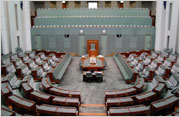Census gives insight into the lives of local leaders
Census gives insight into the lives of local leaders
The census helps to better understand the make-up of Victorian councillors and compares the data over time.
The survey has previously been conducted in 2003, 2006 and 2009, following local government elections.
Data was collected on gender, age, marital status, nationality, disability, caring responsibilities, employment status, occupation, education and qualifications, income and political affiliation from 497 councillors, representing a 79 per cent response rate.
MAV President, Cr Bill McArthur said the census had provided important insight into the participation of different demographic groups in local government.
“According to the census, the average councillor is male, aged between 55 and 65 years, married or living in a de facto relationship, and self-employed or working in a managerial position.
“Despite confirming what many may think of as the stereotypical councillor, the census also identified the increasingly broad range of representation at the local government level.
“There is a steady rise in female representation despite over 50 per cent of female councillors reporting they have caring responsibilities - a four per cent increase since the last census.
“And while there are fewer councillors aged 25 and younger in 2013, a greater number fall into the 26-35 age group. As expected, young councillors are most likely to be from metropolitan councils.
“Most councillors have a post school qualification, and this has risen over time. Women have higher levels of undergraduate and post graduate qualifications than male councillors.
“And cultural diversity continues to flourish, with more than 30 per cent of councillors having one or more parents born overseas.
“Forty-four per cent of councillors are in their first term of office, an increase on the 2009 figures. This number has gone up slightly for males and remained relatively stable for females.
“The number of councillors that have served four to six years in local government has also increased, and our research shows that longer serving councillors with over 10 years’ experience are more likely to be male.
“Sixty per cent of councillors spend 11 to 30 hours a week on councillor duties, in addition to other employment responsibilities. This is unchanged since our last census.
“About 23 per cent of councillors identify with no political party or are ‘swing’ voters; and ‘other party’ or independents now represent over 15 per cent, compared to 12 per cent in 2009.
“Approximately 28 per cent identify as Liberal, up from 23 per cent in 2009; and 21 per cent identify as Labor, down from 26 per cent in 2009,” he concluded.
For more information http://www.mav.asn.au/news/Pages/census-gives-insight-into-the-lives-of-local-leaders.aspx








 Print
Print